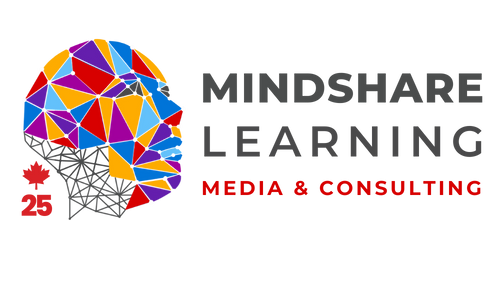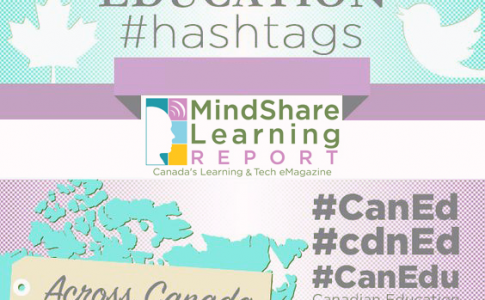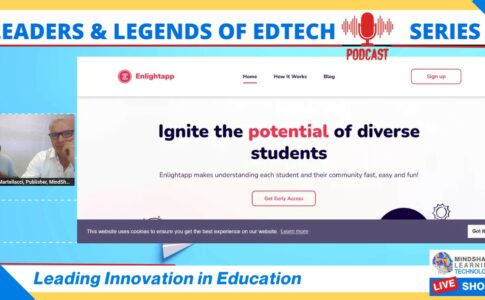Inquiry-based learning (IBL) is making a huge impact across the learning landscapes of this country, and beyond. You might know it as IBL, project-based or problem-based learning, or some other form of the same ‘genre,’ but generally they all have the same purpose and roots in constructivism¹. Technology is a natural fit for IBL. Let me give you some ideas of how you might infuse technology into your IBL program. My view of IBL will be based in the Ontario Library Association’s approach to this pedagogy². Please know that this is one approach of many, and it is not ‘THE’ approach, but one that I have sympathy for simply because it’s clear, robust and supported by a first-rate professional organization. There are other documents, philosophies and approaches; please refer to the document that contributes most to your professional context.
The inquiry method generally follows this process: Exploring, Investigating, Processing and Creating. Of course, you don’t want to get caught up in the details of the process too much because the philosophy of inquiry requires a change in thinking and doing in the classroom. This then becomes the ‘process’ because you have developed a new way of thinking and this new way includes looking at learning and exploration, asking questions, looking for answers and coming to some conclusion based on your investigation. This process is a life-work in that it never comes to an end; it is continual and responsive, always requiring new questions, developing new conclusions and refining previous held conclusions or assumptions about information. It is a ‘big picture’ approach that looks at processes and requires higher order thinking skills, and it necessarily collaborative if it is done correctly. Or, as the Galileo network states,
“Inquiry is a dynamic process of being open to wonder and puzzlement and coming to know and understand the world.”
Sharon Friesen, et. Al., “Inquiry,” http://inquiry.galileo.org (August 28, 2015).
With the above in mind, let us consider the following five (5) ways technology can be used to enhance, extend and make richer the inquiry-based learning approach. I will refrain from being exhaustive, or prescriptive here, because this short article is meant only as a ‘stimulant’ to greater thought – a more cogent way of embracing and extending IBL in your own classroom or school using technology.
¹I’ll treat ‘discovery and guided inquiry’ under the umbrella of IBL.
² Together for Learning: School Libraries and the Emergence of the Learning Commons – A Vision for the 21st Century. Ontario Library Association, Toronto: 2010. The Inquiry Wheel can be found on page 23.
- Use multi-modal, multi-media immersed digital libraries!
Consider online encyclopaedias, databases and video-based resources to explore your inquiry interests, and to help develop a focused inquiry question. Most districts or school boards have purchased a license to online video based teaching and learning resources. Learn360 and Discovery Education are two such resources that your students can explore to pique their interest in a larger broader topic. Or perhaps they have a general idea in the area of inquiry that you have helped them refine and they want to watch and take notes – Google Docs, or Office OneNote work perfectly for this – in order to help them explore possible questions that they want to explore in a deeper way using the inquiry method.
There are also some pretty powerful online encyclopaedias that are differentiated enough to benefit every age level and ability. Britannica Online is one such resource. Once logged on students are able to direct their inquiry by their school level. This encyclopedia is also set up to read back the information – great for students who have reading challenges. A well-designed online encyclopedia will include the above, plus access to multi-media resources, and links to utilities that help export, email, cite and change languages.
- Embrace and Leverage Video.
Video is where it’s at! Consider creating video using tablets, your phone, or other hardware capable of taking video, in order to initiate and gain momentum for students in a given area of inquiry. In fact, using a smartphone is the best way to create video ‘on the fly’ in order to create a constant context of ‘wonder’ for your students. Those ‘wonder’ moments can be shared with your students via any number of online video services, or you could use some of the suggested methods below. Video is the most complete form of combining the multi-media/multi-modal effect in teaching and learning. It’s time to make every effort to embrace this phenomenon in your teaching.
Video is also a great way to showcase the results of the inquiry. Encouraging students to use this medium to combine interviews, record their processes, highlight key research data, or simply to gain the attention of their audience, creates a dynamic final presentation. It’s also a highly collaborative activity.
- Use the ‘Cloud’.
Make every effort to initiate, develop, and keep it all in ‘the cloud’ for a full collaborative experience. More than likely you’re using one of the major multi-function cloud services available today, be it Google Apps for Education, or Office 365. If you wish to truly embrace and empower inquiry-based learning in your classroom, take advantage of the full services offered by these behemoths. The number of ways that you can use these two services to increase capacity in IBL are too numerous to mention here, but there are a huge number of resources available to help you integrate and take advantage of their offerings. - Think ‘Hands-on’ and ‘Makerspace’.
One of the growing movements today in education is the makerspace movement. Sometimes referred to as ‘hackerspaces’ or ‘fablabs’ these unique hands-on learning environments bring the ‘real-world’ into the classroom. Many schools are incorporating them into their Learning Commons – which I wholeheartedly support! – and tying the Learning Commons into the nurturing of inquiry-based learning right across the curriculum.
Developing and maintaining a Makerspace is no small feat. It is probably best approached via the development of a learning commons in your current library setup, however you will need some extra space, or re-organized space, in order to make it happen. You will also need a team approach. This is a great way to develop collaboration and ownership in the journey towards a learning commons, and a culture of inquiry. - Digitize it!
Have students document their journey of IBL using a digital portfolio. Great thinkers and those how have made great gains in numerous fields of study have kept a journal of their journey. And by definition, I think, IBL requires a place to keep track of the ‘ups and downs’ of the learning process. How many times have scientific discoveries been made as a result of a mistake, or misdirection, when heading toward another goal? This can only happen when there’s reflection over the journey and reflection happens best when you have a learning map to refer to and think about.
Further, if the digital portfolio is collaborative then this reflection can be a group process! Let’s embrace making mistakes in our learning, but not simply because they’re inevitable, but because mistakes direct us down a different path and they help us to refine our thinking. Collaborative work with peers and teachers only enhances this process.
N.B.: If you’re looking for a way to ‘test the waters’ with digital portfolios, Nureva Troove is offering a free year-long trial of their online digital portfolio. From what I’ve seen, this Ottawa-based company is doing it right! But you better hurry, this free offer only lasts until the end of September!
Timothy Gard









